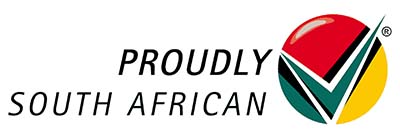Ensuring Transparency in Financial Records”: that’s a crucial topic!
It’s the cornerstone of trust, accountability, and healthy financial ecosystems, both in businesses and personal finances.
To dive deeper, I need a bit more context from you. What specifically would you like to know about ensuring transparency in financial records?
Here are some possible angles we could explore:
- For individuals: Tips for managing personal finances transparently, budgeting, and record-keeping.
- For businesses: Strategies for transparent financial reporting, internal controls, and investor relations.
- General principles: The importance of transparency, the role of auditing, and best practices for disclosing financial information.
- Challenges and solutions: Obstacles to transparency, such as complex accounting practices or lack of financial literacy, and how to overcome them.
Key Facts
- Emphasizes the crucial role of transparency in financial records for trust and accountability in both personal and business finance.
- Outlines essential elements of transparent financial records: accuracy and completeness, clarity and accessibility, and accountability and auditability.
- Internal challenges include lack of understanding, data quality issues, internal resistance, and resource constraints.
- External challenges involve complex regulations, competing interests, privacy concerns, and the need to rebuild trust.
- Initiatives include standardization, automation, enhanced data governance, transparency training, independent audits, and stakeholder engagement.
- Best practices encompass plain language reporting, data visualization, regular performance reviews, benchmarking, and embracing technology.
Key Elements Of Transparent Financial Records
Accuracy and Completeness:
- Data integrity: All financial data, including transactions, assets, liabilities, and income, should be recorded accurately and consistently. Regular data verification and reconciliation processes are crucial.
- Materiality: All material financial information, meaning information that could significantly impact decision-making, should be disclosed. Omission of important details can be misleading.
Clarity and Accessibility:
- Plain language: Financial information should be presented in a clear and understandable manner, avoiding jargon and technical terms whenever possible.
- Standardization: Using standardized accounting principles and reporting formats ensures consistency and facilitates comparison across different entities.
- Accessibility: Financial records should be readily available to authorized stakeholders in a timely manner. This could involve online portals, regular reports, or open-door policies for inquiries.
Accountability and Auditability:
- Internal controls: Strong internal controls are essential to prevent errors and fraud, and ensure the accuracy and reliability of financial records.
- External audits: Independent audits by qualified professionals provide objective verification of the financial information and enhance trust among stakeholders.
- Transparency in decision-making: Disclosure of the rationale behind financial decisions, such as investments or expenditures, builds trust and allows stakeholders to hold decision-makers accountable.
Challenges In Achieving Transparency
Internal Challenges:
- Lack of understanding: Individuals or organizations may not fully grasp the importance of transparency or lack the necessary financial literacy to effectively manage and disclose their financial information.
- Data quality issues: Inaccurate or incomplete data, due to manual recording errors, poor systems, or inadequate controls, can undermine transparency efforts.
- Internal resistance: Some individuals or groups within an organization may resist transparency due to concerns about revealing sensitive information, protecting personal interests, or fearing potential repercussions.
- Lack of resources: Investing in technology, training, and personnel needed for robust transparency practices can be resource-intensive, especially for smaller organizations or individuals.
External Challenges:
- Complex regulations: Complying with ever-evolving financial regulations and reporting standards can be challenging and time-consuming, requiring specialized expertise.
- Competing interests: Different stakeholders, such as investors, creditors, and regulatory bodies, may have different expectations for the level and type of information disclosed, creating potential conflicts.
- Competition and privacy concerns: Balancing transparency with protecting sensitive information, such as trade secrets or personal data, can be a delicate act, especially in competitive environments.
- Lack of trust: In situations where trust has been eroded due to past misreporting or scandals, building trust and convincing stakeholders of the value of transparency can be difficult.
Initiatives And Best Practices For Transparency In Financial Records
Initiatives:
- Standardization and Automation: Implement standardized accounting principles and reporting formats across the organization. Integrate automation tools for data entry, reconciliation, and reporting to minimize errors and improve efficiency.
- Enhanced Data Governance: Establish clear data ownership, access control, and security protocols. Regularly audit and update data to ensure accuracy and integrity.
- Transparency Training and Communication: Provide training programs to employees on the importance of transparency, financial literacy, and responsible data handling. Foster open communication channels to encourage questions, concerns, and feedback regarding financial information.
- Independent Audits and Reviews: Conduct regular independent audits by qualified professionals to verify the accuracy and reliability of financial records. Consider additional reviews by internal audit teams or external specialists for specific areas.
- Stakeholder Engagement: Actively engage with stakeholders, including investors, creditors, regulators, and the public, by providing clear and accessible financial information. Hold regular financial briefings, publish detailed reports, and respond promptly to inquiries.
Best Practices:
- Plain Language Reporting: Avoid jargon and technical terms in financial reports and disclosures. Use clear and concise language that is understandable to a non-financial audience.
- Data Visualization: Utilize charts, graphs, and other visual elements to present complex financial information in a clear and digestible manner.
- Regular Performance Reviews: Conduct periodic reviews of internal controls, data quality, and reporting practices to identify and address any weaknesses or areas for improvement.
- Benchmarking and Best Practice Sharing: Compare your transparency practices to industry benchmarks and best practices. Share your own best practices and experiences with others to contribute to a broader culture of transparency.
- Embrace Technology: Leverage technology solutions like data analytics tools, blockchain technology, and secure online reporting platforms to enhance data security, accessibility, and transparency.
Conclusion
As we wrap up, remember this: financial transparency isn’t a checkbox; it’s a journey.
In South Africa, it’s not just compliance; it’s a commitment to building relationships based on trust.
So, fellow adventurers, as you set sail in the sea of South African finance, let transparency be your guiding star.
Your stakeholders will thank you, and so will your bottom line. Smooth sailing!








